Few countries are as celebrated and maligned as India. On the one hand, people speak in horror of dirty streets, chaotic infrastructure, and scenes of poverty. At the other, they delight in its exotic cuisines, picturesque landscapes, and unbridled spirituality. India is a place of contradictions. It is a dream destination, for sure, but it can also be wildly unpredictable. If you want to thrive and survive here, you’ve got to be fearless. Chat with the locals, eat with your hands, embrace every adventure, no matter how big or small. This applies to modes of transport in India too, because there are countless ways to explore and all of them are unforgettable. Whether you hop on a train, catch a rickshaw, or cruise the waterways, you’re going to have a unique experience.
We spent six months backpacking through India so we definitely got to grips with all modes of transport on offer.
Don’t forget that knowledge is your friend. Transport in India can be complex and overwhelming. However, if you know a little about how things work, the number of options available won’t be so intimidating.
Our guide to modes of transport in India will help you get from A to B in this big, beautiful country.
A Guide To The Different Modes Of Transport In India
Transport In India – The Train
When people talk about authentic Indian experiences, train travel is a common subject. Here, the rail network is like a circulatory system. It is the fastest way to get from one side of the country to the other, outside of air travel. Thus, it is central to life in big cities like Delhi and Mumbai.
Unfortunately, quality, speed, and comfort vary wildly. Your rail experience will depend on where you’re travelling, how much you pay, what time of day you board, and a litany of other factors. The best advice is to expect the unexpected when riding the rails in India.
You may get to your destination quickly and without incident. Or, it may take a lot longer than anticipated. Treat it as an experience though, and you’ll come away with some incredible memories. Nothing will expose you to life in India faster than a journey on a packed train carriage.
Pros: You get to enjoy some achingly beautiful landscapes from ground level.
If you travel on a sleeper train overnight you’ll miss out on the epic views but you can get a good night’s rest while getting to your next destination saving both time and money. And the calls of the chai man selling spiced tea on the train first thing in the morning will be your alarm clock.
Cons: Sometimes, the only facilities onboard will be a basic squat toilet, so be prepared with toilet paper and hand sanitiser! Often large numbers of people are crammed into the lower class carriages but this can be avoided by travelling in the higher class carriages.
Cost: As there are eight classes on Indian trains, the cost of a ticket is also highly variable. This depends on your journey length, the type of train you’ll be travelling on and the class you choose. There are eight or nine different classes available on the Indian Rail system and not every class will be available on every train. Trains book out far in advance, especially on popular routes and around Indian public and/or religious holidays as you can imagine. So if you’re planning ahead or need to travel on specific dates, book your tickets in advance, especially for the AC classes as they book up fast.
Expert Tip: We loved using Cleartrip to book our own trains in India as many train travel agents there add on a fee simply for booking them for you.
The Classes Of Trains In India Explained
Generally, AC means there will be air conditioning and the corresponding number refers to the number of berths offered or the class level.
AC First Class
The AC First Class (1AC) carriages are the most expensive of all the classes and offer more comfort, security, and privacy. Some 1 AC trains allow two people to share a private cabin or coupe, however, preference will be given to couples travelling together when the seating chart is being drawn up. The majority of 1 AC cabins seat/sleep 4 people, so there will be two berths on each side. These cabins and coupes have sliding doors and can be bolted from the inside. Berths in a 1 AC Coach are wider (and are better cushioned) than those in other classes. This is the only class of train that has lockable doors in India.
Each cabin/coupe also has a ‘bell’ switch, which allows you to call the attendant of the coach who will clean your cabin and remove any rubbish every now and then. You will be provided with blankets and a pillow and most 1 AC Coaches also have ‘toilet occupancy indicators’ in each cabin, which tell you whether the toilets of the coach are vacant or occupied and an option of western-style or Indian style toilet. You’ll have a reading light, a power outlet and/or curtains in your berth. However, being double the cost of 2 AC and on a par with the cost of flying, we never actually travelled on a 1 AC coach in India. As we were travelling in a couple, security wasn’t much of a concern for us as it would be for say a solo female traveller.
AC 2 Tier Class
The Second AC or AC 2 Tier class (2 AC) is pretty much the exact same as the four-person berths in 1 AC except the berths are a little less cushioned, narrower and you don’t have the option of the lockable door. There is, however, storage for luggage and chains to lock luggage onto under the berths. If you have valuable items either lock them up underneath or keep them with you on your person when asleep in your berth. We did this during our entire time in India and never has a problem. You will be provided with blankets and a pillow and you’ll have a reading light, a power outlet, and curtains around your berth for added privacy. We did travel by 2 AC coach once in our time in India as our preferred more affordable class 3 AC wasn’t available. It was good value and very comfortable but not quite worth the jump up in price from 3 AC comfort-wise unless you really want a curtain and reading light.
AC 3 Tier Class
The Third AC or AC 3 Tier class (3 AC) was how we travelled on the majority of our long, overnight train journeys in India and was the class of our maiden train voyage there. There are three tiers of bunks on each side so there are six people to a berth. You will be provided with blankets and a pillow in the evening and you’ll have a power outlet. However, you won’t have a reading light or curtains around your bunk. During the day, the middle beds must be folded down flat against the compartment walls to allow passengers to sit on the lower beds.
Sleeper Class
Sleeper class is probably the most popular class of train travel in India, making it a crowded and somewhat daunting experience if it’s your first train trip in India. It’s is basically the same as 3 AC but without the air conditioning and slightly less cushy bunks and you’re not provided with sheets or a pillow – so be prepared with your own! We travelled by sleeper class a couple of times in India, however, it was definitely not our first choice for longer overnight journeys as the heat and noise from the open windows makes it harder to get proper rest. Like 3 AC, during the day, the middle beds must also be folded down flat against the compartment walls to allow passengers to sit on the lower beds.
The other most common classes of train in India are Executive AC Chair Car (EC), AC Chair Car (CC), and Second-Sitting(2S), all of which we used during our time travelling in India. These are all seated classes with varying degrees of comfort.
Executive AC Chair Car
EC is only found on Shatabdi Express trains and a few day Duronto Expresses and it offers 2 x 2 seating with lots of legroom and comfy seats. Food is generally included in the fair on Shatabdi Express trains.
AC Chair Car
AC Chair car has 3 x 2 seating and air-con with comfortable seats, making it good for short daytime journeys.
Second-Sitting
2S is the cheapest reserved class available and it has 3 x 3 seats in a bench formation as opposed to individual seats. There is no AC and the seats don’t recline. This is a fine option for a short journey, but this class can get quite full with unreserved short distance travellers hopping on.
Unreserved
Unreserved is a class we never experienced and is the cheapest class of train travel. As the name suggests you don’t need a reservation to board the coach, you just hop on with your ticket. Because it’s the cheapest form of train travel and as most trains have only two unreserved coaches, the unreserved coaches are often massively overcrowded.
Transport In India – The Metro
For fast, stress-free journeys across Delhi or Kolkata, you can take the METRO. This is a relatively recent addition to both cities and one of the cheapest forms of urban travel. Unlike the national rail network, these trains are modern, comfortable, and fully air-conditioned.
They are split into five different lines, with a wait of no more than fifteen minutes between each train. Services start at 5.30am and run up until 11.30pm, so they’re ideal for exploring during the daytime. Jump on the Heritage Line to check out some of Delhi’s tourist hotspots.
Pros: The METRO is very similar to suburban rail systems in Europe or the States. It is easy to understand, comfortable to ride, and fairly efficient.
Cons: Security is much tighter on the METRO than it is on the regular railway. You may be required to stop for a bag search and a body scan on the way in.
Cost: Fares stretch from a minimum of eight rupees (around one cent) to a maximum of fifty (80 cents).
Expert Tip: The first carriage of every METRO train is reserved exclusively for women.
Transport In India – Air Travel And Internal Flights
Like the rail networks, air travel in India can be a mixed bag. The quality of your experience really depends on where you’re flying from and which airline you take. Check out Indigo Airlines for a look at fares, routes, and onboard perks.
The main problem with using the airways for domestic travel is congestion. There is an enormous amount of traffic, and many of the airports have not been modernised. So, don’t expect a lot of luxuries and don’t be surprised if your flight gets delayed.
Despite these issues, air travel is one of the quickest ways to get around the country. India has the cheapest flights in the world, but there is little difference between long and short-haul fares. If you’re planning to travel a relatively short distance, it might be better to catch a train.
Pros: Domestic air travel in India is significantly cheaper than it is in Europe or the States.
Cons: The quality of service, seating, food, and just about everything else varies from airline to airline. Choose your carrier carefully.
Cost: In 2016, it cost an average of $2.70 to fly one hundred kilometres (63 miles) on a budget airline in India. Remarkably, it only cost $2.67 to fly the same distance on a full-service carrier.
Expert Tip: Air travel here is so cheap that, if you’re not desperately trying to save money, it’s worth spending a little more for a full upgrade. For only a few more rupees, you can have more leg room, full meals, and more comfort.
Transport In India – Buses
The Day Bus
Buses are, by far, the most common mode of transport in India. In fact, they account for around 90% of all public transport. Like the trains, they are very affordable and reasonably efficient. However, catching a bus in the major cities is much easier than getting a train as they are generally easier to book last minute and in general.
Over the last decade, the bus system has been modernised. Now, many services are air-conditioned, with plenty of seats, and accessibility features. Others are still cramped, dirty, and unbelievably noisy, so pay a little more for comfort.
Pros: The tourist lines are ideal for travelling and offer more comfort. If you’re new to India, they are certainly preferable to the local buses and for those longer bus journeys.
Cons: Many local services continue to be cramped and noisy. Often, there are no toilets, but there will be ample rest stops on extended journeys. Sometimes the buses will be extremely full, but don’t worry – you can always sit on the roof!
Cost: You’d be looking at the cost of RP800 ($14) for a five hundred mile journey on a middle-tier class bus. So, you can see that bus travel is also very cheap in India. Shorter journeys are likely to cost just a few dollars, even on the more upmarket services.
Expert Tip: Pay attention to where locals are sitting when you get on the bus – they are generally in the know in regards to the direction the sun will shine on the bus from and tend to sit on the opposite side. Handy if there are no curtains! Also, avoid the seats over the back wheels if you can – they will be the bumpiest! Take the train if you are not prepared for honking, yelling, and some very questionable road skills. These journeys can be hair-raising, to say the least. Bus travel on the Indian subcontinent, in general, is definitely an experience you won’t forget!
The Night Bus
The night bus, also known as ‘a sleeper’ is very similar to the public and tourist lines. However, it is designed for longer, overnight journeys, so there is a little more space. With that being said, don’t expect a cushy cabin or compartment.
The locals refer to sleeper cubicles as ‘coffins.’ This makes them sound a lot worse than they are, but expect basic amenities. The coffins are small boxes stacked on top of one another. Some night buses have a mixture of singles and doubles, so you can bunk up with a friend.
Pros: Some night buses travel the entire length of India. They are a cheap, stress-free way to explore. Often, like with the trains, we would book a sleeper bus instead of staying an extra night in a hostel or hotel.
Cons: It can get very noisy on the sleeper buses. There are no blankets or pillows. You have to be prepared and bring everything yourself. Otherwise, it’ll be a cold, bumpy ride.
Cost: You can travel long distances for RP100-200. However, if you want a private coffin for sleeping, it’ll cost you around RP600 ($10).
Expert Tip: Due to issues with space, many buses make it an obligation to put bags in the hold. Make sure you remove all valuables and important documents first and keep them with you.
Transport In India – Rickshaws
The Auto-Rickshaw
The auto-rickshaw is exactly as you’d imagine. You don’t need to be anywhere near India to see one because they’re a common sight on TV and in the movies. Rickshaws are ideal for this country (and synonymous with it) because they’re fast, compact, and rather daring.
The ‘rick’ as the locals say, is essentially a three-wheeled taxi cab, with open sides. Though they can be surprisingly nippy, rickshaws are only marginally more powerful than a bicycle with a small engine. They are a fantastic way to make short trips, as these little motors can weave in and out of traffic.
Pros: There are now laws to prevent fare tampering. The slightly higher night charges cannot be implemented before midnight.
Cons: In Mumbai and Kolkata, auto rickshaws are banned from certain areas of the city.
Cost: In most cities, fares cost RP25 (40 cents) per kilometre for the first two kilometres. After that, it’s RP8 per kilometre. If riding after midnight, an extra 25% is added to the fare.
Expert Tip: Do not use a rickshaw if the driver refuses to turn on the fare metre. Despite the new laws, some still try to get away with unfair practices.
The Cycle Rickshaw
As its name suggests, the cycle rickshaw is the same as a regular rickshaw, but without the motor. They are powered by the driver, so the speed of your ride depends on the strengths of their legs.
While they’re not overly quick, they are great for sightseeing. Take a cycle rickshaw if you want to get an authentic flavour of Mumbai, Kolkata, Delhi, or one of the other big cities. Your driver may even point out local attractions or give you information about the area.
Pros: Cycle rickshaws tend to overtake taxis in the busier parts of the city. They rarely get stuck in traffic, because they can weave in and out of lanes.
Cons: Riding in any kind of rickshaw can be a little dicey. Drivers play fast and loose with the rules of the road, so keep hands and feet inside the carriage.
Cost: Prices can vary, but in Delhi, expect to pay around RP30 for a ten-minute ride.
Expert Tip: Always agree on a rate before you set off. You don’t want to end up arguing about the fare at the end of the journey.
Transport In India – Trams
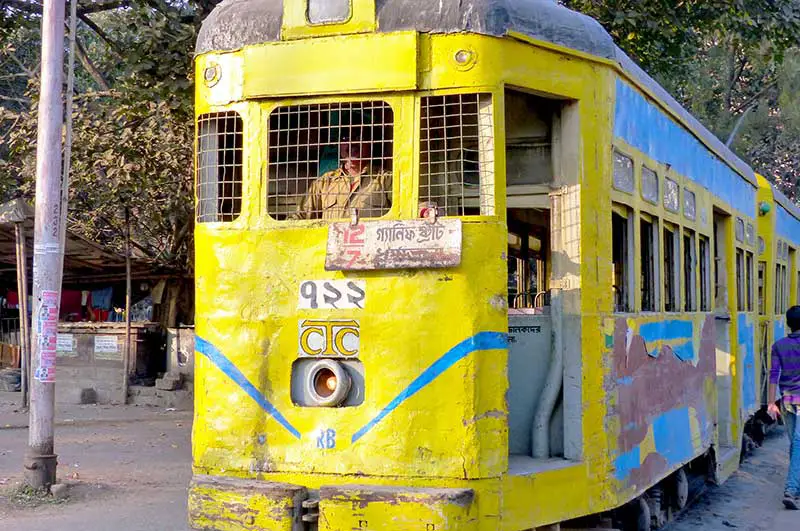
You can only catch a tram in the city of Kolkata. This is where you’ll find the last functional tram network in the whole of India. It is more than a century old, so don’t miss out on the chance to ride if you’re in the area. You’re guaranteed a unique and delightful experience.
The Kolkata tram system is surprisingly extensive. It covers twenty-five routes within the city. However, it is not one of the quickest ways to get around. The best way to ride is with an open mind, an adventurous spirit, and a worry-free mind. Just enjoy a piece of Indian history.
Pros: The trams make for a fantastic photo opportunity. Get your camera out when you see them pass by.
Cons: Not the most efficient way to travel long distances. Better as a tourist experience.
Cost: Expect to pay around RP5 (a couple of cents) for a ride on the Kolkata tram. The fare remains the same no matter how far you travel.
Expert Tip: Sundays tend to be less crowded. They are a great time to catch the tram if you want a bit of peace and space.
Transport In India – Taxis
Catching a taxi is remarkably easy to do in the big Indian cities and the “Old Amby” (Ambassador cars commonly used as taxis) is an Indian icon. Many travellers catch a cab from the airport to their hotel, because it’s the most uncomplicated choice after a long flight. Prices aren’t unreasonable, especially since the government introduced strict regulations.
As with auto-rickshaws, there are rules regarding evening fares and taxis must use a metre to determine the cost. It is common, especially in Mumbai and Kolkata, to share taxi rides. This reduces the cost for each passenger. The more rides, the cheaper the fare.
Pros: Taxis aren’t a very exciting way to travel, but they are easy. You’ll find them everywhere you look, and it’s hard to go wrong.
Cons: Some cities, like Ahmedabad, Bangalore, and Hyderabad only permit taxi rides that have been booked over the phone.
Cost: Prices vary wildly across the Indian cities. They start at RP25 (Kolkata) and rise to as much as RP100 (Goa).
Expert Tip: Uber is now a presence in many of the major cities. It takes a lot of the hassle out of fare bartering and handing over the correct money.
Transport In India – Chauffeured Cars
India is unique when it comes to hire cars. It’s quite unusual for tourists to rent and drive the vehicles themselves. The more common method is for an experienced driver to be supplied with the deal, so you get a personal chauffeur.
This is one of the most expensive forms of travel in India. However, at just RP1800 ($27 per day), it’s a steal compared to western prices. Generally, hire cars, and their drivers are paid for a day of service. Some firms allow drivers to sleep in the vehicle on overnight trips.
It is common for hire deals to come with a mileage clause. So, for example, you’d pay the $27 and no more if the vehicle travelled less than 200km. Extra kilometres cost, on average, around RP7. Larger vehicles, like SUVs, may command higher rates.
Pros: You get to travel in complete luxury and security. There are no crowds, no unpleasant smells, and no rickety seats.
Cons: The option to self-drive is available, but relatively rare. This is because the roads are just too dangerous for the uninitiated.
Cost: It really depends on the type of car, number of hours, distance travelled, and the itinerary.
Expert Tip: Allow plenty of time to get to your destination. The traffic can be intense in India and cars aren’t able to weave and escape in the same way rickshaws can.
Transport In India – Shikara Boats
The shikara, a type of wooden boat, is an iconic part of Kashmir and a very popular tourist attraction. They’re not found anywhere else, so you’ve got to be in Srinagar to catch the experience. These beautiful wooden boats drift languidly down the Nagin and Dal lakes, with bountiful charm and grace.
Locals use shikara to get around the waterways, but visitors see them primarily as an experience. They routinely drop explorers off at sights like Nishat Garden, Shalimar Garden, and the Hazratbal Mosque. They’re common at the legendary floating markets as well.
Pros: The shikara is made out of wood and painted in bright colours. They are an amazing way to explore and the peace and serenity when out on the lake is a welcome relief from the congestion and crowds that can accompany travel in India.
Cons: Not a great way to get around. Use these boats for sightseeing and getting to hard to reach areas of the waterways.
Cost: You can ride an hour for around RP300 ($4.50). The fares are always charged per boat, rather than per person. Shikaras have four passenger seats.
Expert Tip: The lengthy route (two hours) takes in Char Chinar, the floating gardens, the floating market, Nehru Park, and more. It costs RP600 and is well worth the extra money.
Getting Around In India Is A Big Part Of The Travel Experience
India is a huge place, with plenty of noises, smells, and sights that just aren’t customary for western tourists. It’s accurate to call the country a ‘culture shock,’ but it doesn’t have to be a bad thing. Travel in India is a chance to step out of your comfort zone and find pleasure in simply being.
Here is a place where the ordinary is vital, and the necessary is exhilarating. If you’re willing to embrace its unpredictability, you’ll have the time of your life. Just be smart, protect your valuables, and use only officially recognised forms of transport. This is the best way to keep yourself safe and have an amazing time.
Over To You – Did You Use Any Of These Modes Of Transport In India?
Have you travelled to India? Did you use any or all of these modes of transport in India? Or perhaps you discovered a new one. Let us know in the comments below!
Pin It!
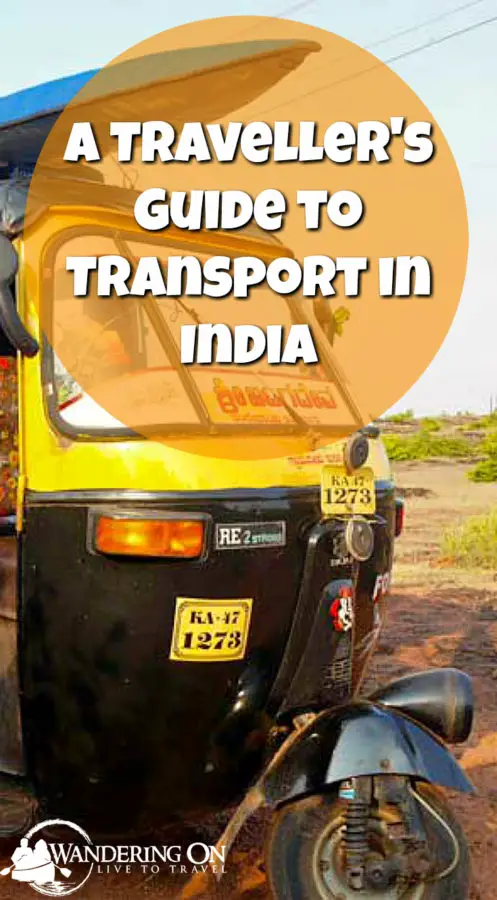
Noelle is a pescatarian foodie, travel junkie and a massive dog person. She’s a self-diagnosed chocoholic and loves tea, coffee and red wine. She also loves to do yoga and therefore is the sensible, grounded one in the relationship! Noelle loves to really get to grips with the culture of a country and the mindset of the people. She also enjoys picking up a few words in the local language wherever she is and, of course, sampling the local food!
Sign up for our free travel photography Ebook "Faces of Nepal" and you'll also receive our monthly newsletter.

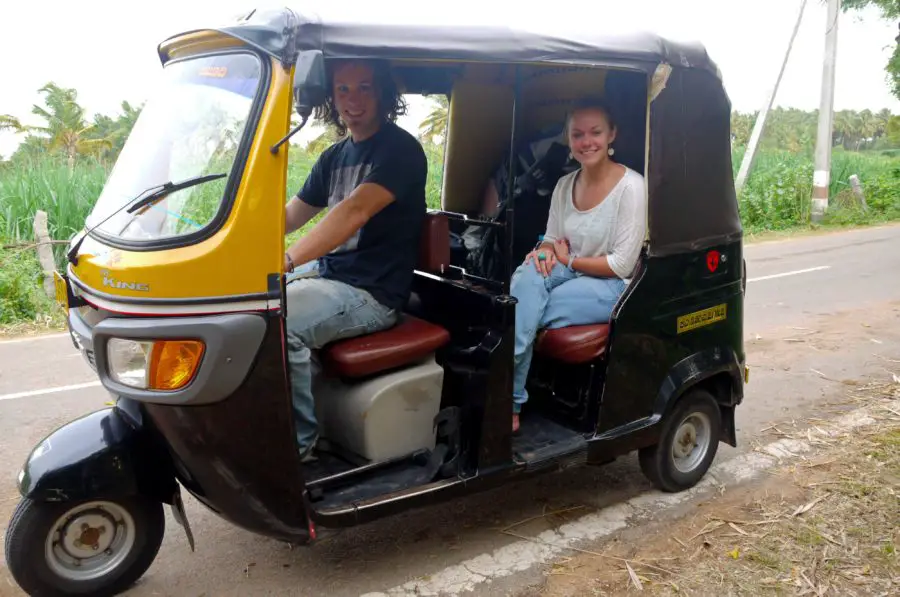
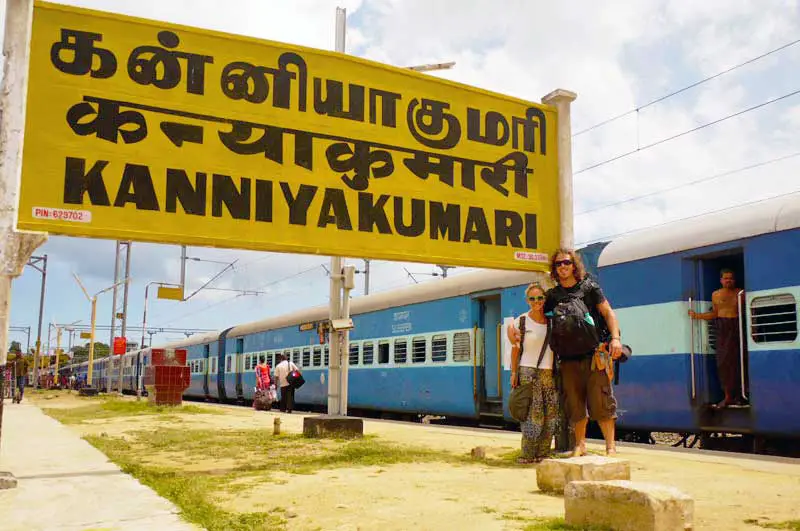
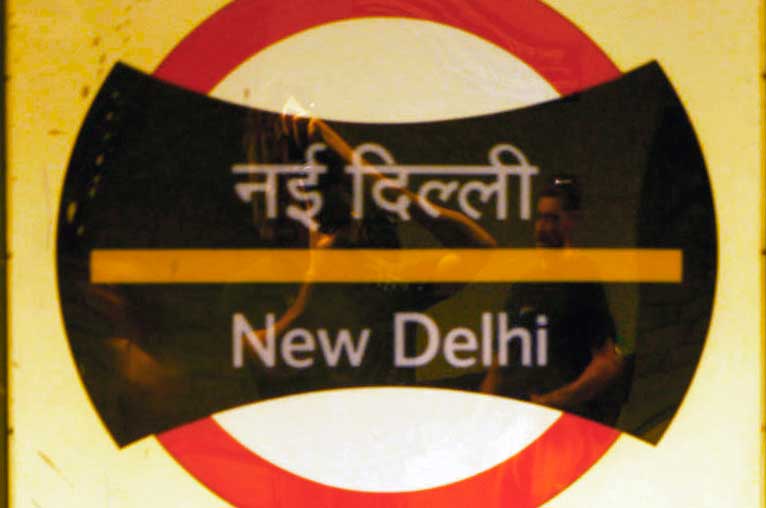
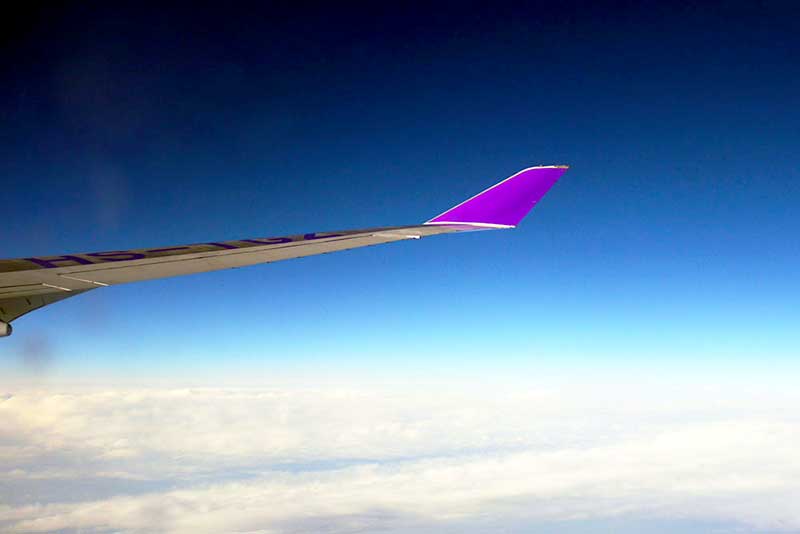
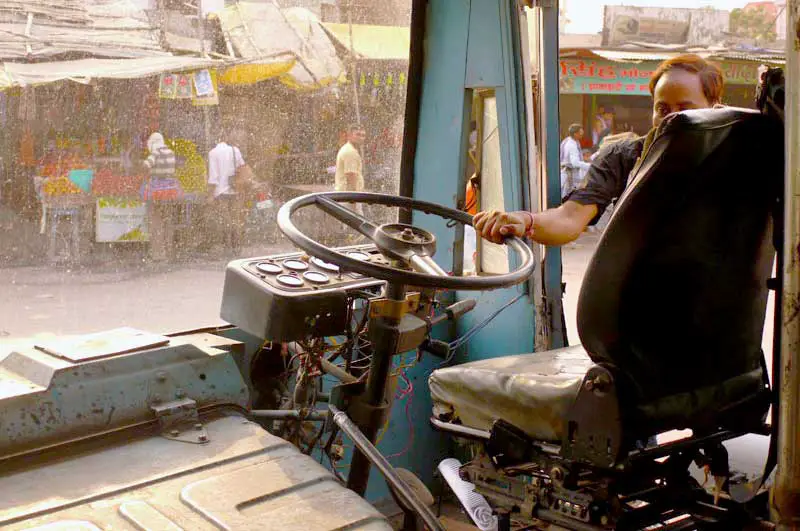
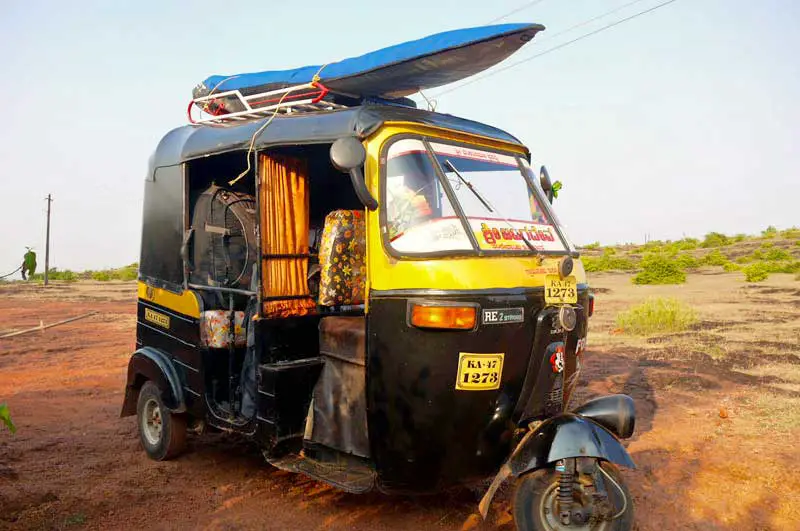
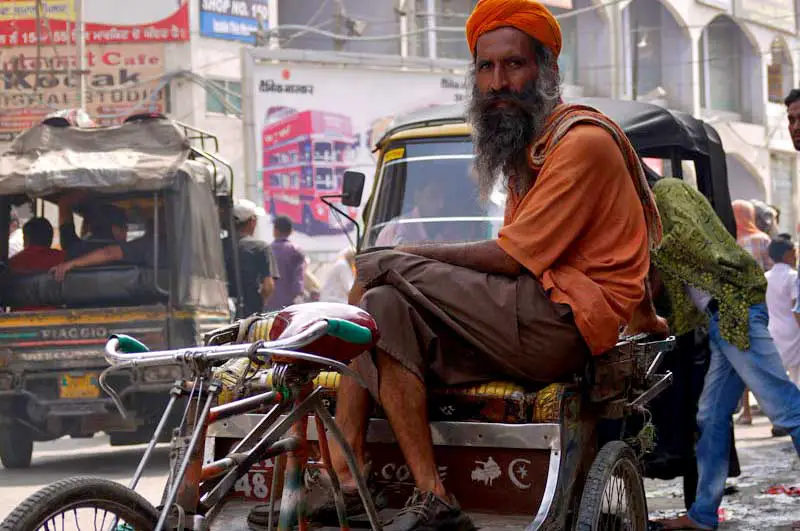
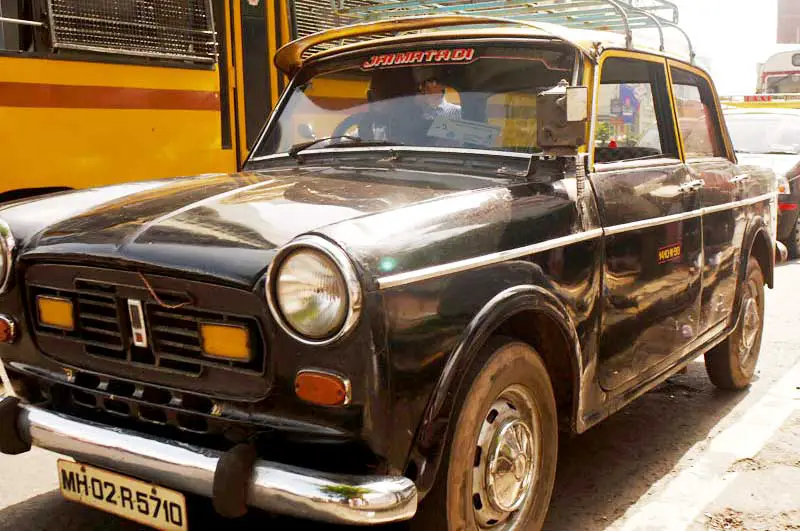
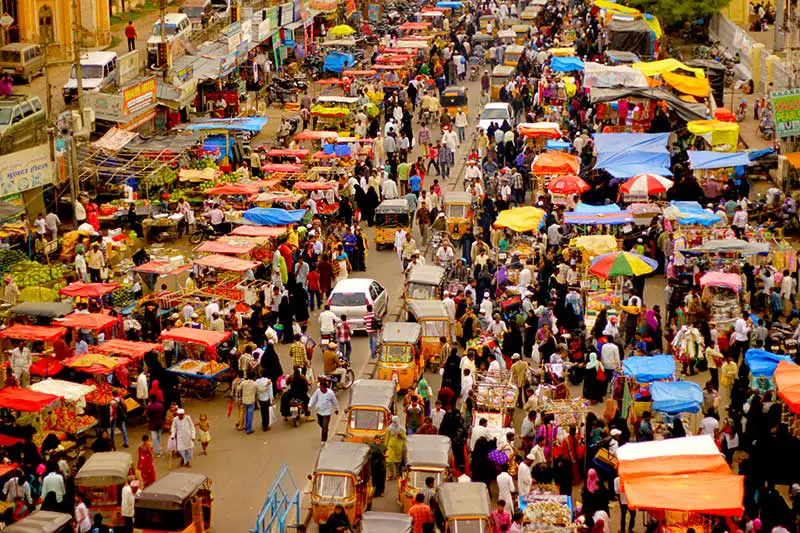
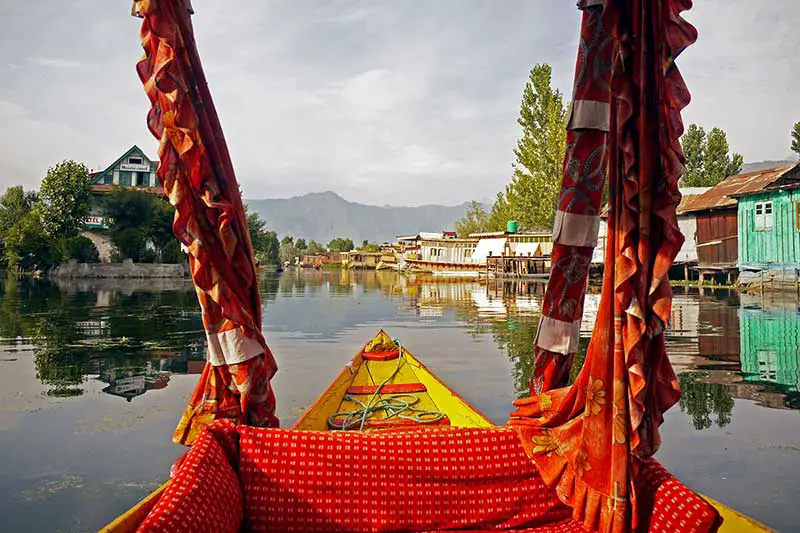



Its very nice blog very easy to read and understand for foreigners as well as Indian keep posting like these blogs.
Thanks Vibhor. 🙂
‘Love the post!
Yep! Travelling through India is always a hair-raising experience!
I first went to India 12 years ago. Eek! I travelled solo and used all forms of transport to get around, as I was in India for 30 days. It was pretty exciting, but I didn’t like the night train as I just couldn’t sleep ‘cos of the noise, and the chatter of the chai man!
I’m in India again this summer, and I usually love traveling by train in Europe, but this time, I’ll be using the Indian train for shorter journeys, and in the daytime!
Thanks so much Victoria – we’re glad you enjoyed the post! Travelling through India is, quite literally, a rollercoaster of ups and downs – we loved moving around by public transport and spent 6months in India travelling only by land. We hope you have an amazing time in India this summer, we can’t wait to go back again someday – the Chai man was always our ‘alarm-clock’ in the mornings after an overnight train journey, nothing like a sugar rush to start the day! 🙂
I have been to I India several times, first as a tourist and second as a travel writer. I have always enjoyed my trips to India. Despite the poverty and filth, it’s a fascinating country with friendly people. As an experience traveller, I say enjoy your visit and experience the Incredible India!
Hi Mansoor! We couldn’t agree more – India is a country of stark contrast and as a writer/photographer, there’s always something interesting or unique happening and, yes the people are incredibly welcoming and friendly – we made some great friends while we were there! Mother India – she’ll always be calling! 🙂
Interesting post! Yes, mode of transport in India is also an experience and it must be enjoyed to really dig deep into the Indian way of life. There’s so much one can discover and learn by just travelling in a local transport — the people, their daily life, the buzz of the streets and markets, etc.
We couldn’t agree more Renuka,
Thanks for your comment!